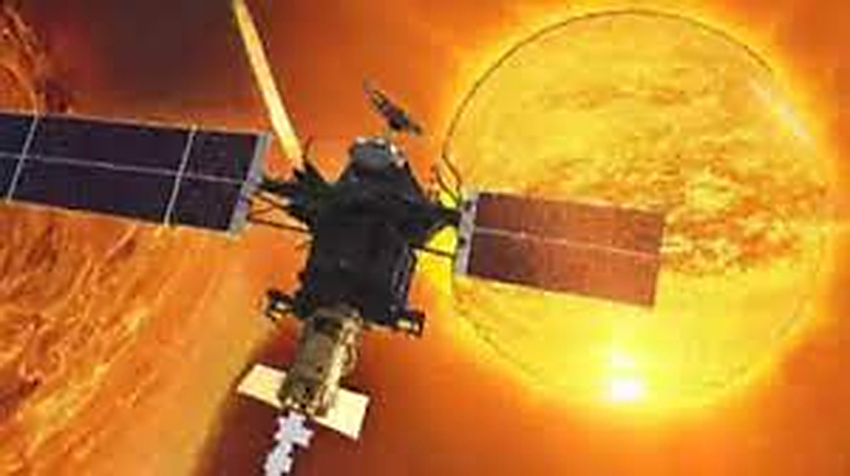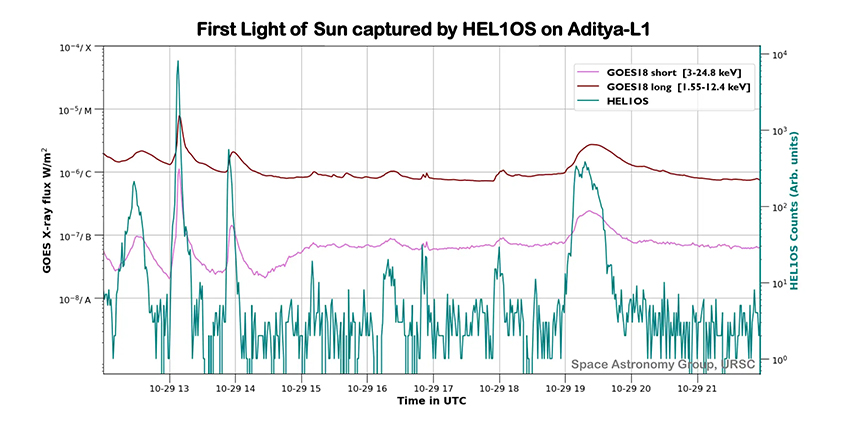ISRO’S Solar Mission Aditya L1 captures first high energy solar flares
By R. Anil Kumar
- First High-Energy Explosion from the Sun captured by Aditya L1
- Capturing the first High-Energy X-ray glimpse of Solar Flares is an indication that the mission is so far doing well on the expected lines.
 Bangalore. ISRO’s maiden solar mission, Aditya L1, has captured its first high energy X-ray glimpse of solar flares. During its first observation period from approximately October 29, the High Energy L1 Orbiting X-ray Spectrometer (HEL1OS) on board Aditya-L1 spacecraft has recorded the impulsive phase of solar flares, the space agency said in a statement on November 7.
Bangalore. ISRO’s maiden solar mission, Aditya L1, has captured its first high energy X-ray glimpse of solar flares. During its first observation period from approximately October 29, the High Energy L1 Orbiting X-ray Spectrometer (HEL1OS) on board Aditya-L1 spacecraft has recorded the impulsive phase of solar flares, the space agency said in a statement on November 7.
A solar flare is a sudden brightening of solar atmosphere. The recorded data is consistent with the X-ray light curves provided by National Oceanic and Atmospheric Administration’s (NOAA) Geostationary Operational Environmental Satellites (GOES).
“Commissioned on October 27, 2023, HEL1OS is currently undergoing fine-tuning of thresholds and calibration operations.
The instrument is set to monitor the Sun’s high-energy X-ray activity with fast timing and high-resolution spectra,” it said. HEL1OS data enables researchers to study explosive energy release and electron acceleration during impulsive phases of solar flares.
HEL1OS was developed by the Space Astronomy Group of the U R Rao Satellite Centre, ISRO, Bengaluru, the agency added.
HEL1OS, the hard X-ray spectrometer on Aditya-L1 Solar Mission by ISRO, is the harbinger of flaring activities on the Sun, with the ability to capture the early impulsive phase of the solar activity. According to ISRO, flares produce enhanced emission in all wavelengths across the electromagnetic spectrum – radio, optical, UV, soft X-rays, hard X-rays and gamma-rays.

Flare emission consists of emissions from accelerated particles and hot plasma. Aditya-L1 spacecraft is designed for providing remote observations of the solar corona and in-situ observations of the solar wind at L1 (Sun-Earth Lagrangian point), which is about 1.5 million kilometres from the Earth. It is the first dedicated Indian space mission for observations of the Sun.
Aimed at studying the Sun from an orbit around the L1, the mission carries seven payloads to observe the photosphere, chromosphere and the outermost layers of the Sun, the corona, in different wavebands.
Aditya-L1 is a fully indigenous effort with the participation of national institutions. An ISRO scientist told that capturing the first High-Energy X-ray glimpse of Solar Flares is an indication that the mission is so far doing well on the expected lines.





